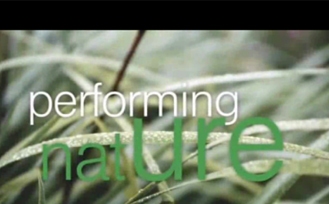Delacon Performing Nature Symposium – Day 1

Austrian company Delacon – a pioneer in the production and marketing of phytogenic feed additives – brought 250 people together at their Performing Nature Symposium in Greece. On the beautiful island of Crete, the first day of the symposium was full of talks about pigs, poultry, and why a Plan B is important.
Company President Helmut Dedl officially opened the symposium by briefly looking back on the 30 years that Delacon has existed. Delacon is a small company with about 70 employees, however, it stands out because of their long history in phytogenics and essential oils and their current strong R&D focus.
“We are very careful in our claims,” said Dedl, adding that the company spends 10% of their turnover in research activities and trials.
Boundaries
Prof. John Hodges from Austria kicked off the speaker session by addressing “boundaries in animal production”. Being a animal geneticist himself, he stressed that the agricultural sector should be careful in the application of GM crops and animal cloning. He explained that some boundaries are vital (ancient) whereas others may be less vital. This should be taken into account when “playing with nature”.
Hodges believes that we are also too focused on making current production systems more efficient instead of having a plan B in mind. He advocates increasing the support for small rural farmers. “This way, we might have more change in safeguarding future world food supplies instead of letting mega firms grow even bigger.”
Having a Plan B is needed because we have reached the green plateau regarding the use of fertilizer in crops. “I think GM crops are not the silver bullet, relying on them to feed the world is too tricky,” said Hodges.
Brazilian chickens
Neivaldo Burin from a large poultry integrator in Brazil (C. VALE Cooperativa Agroindustrial) gave an excellent overview of the Brazilian poultry industry. Brazil is currently the No. 1 poultry exporter in the world, shipping an annual 3,645 mln t (2008). Burin explained that the Brazilian chicken industry from the 1980s has revealed itself as being one of the most dynamic activities of the Brazilian economy. The strength of Brazilian poultry is partly thanks to the fact that the country has many raw materials on hand (soy, maize and wheat). Moreover, the climate is excellent, with 2 (sometimes 3) harvests per year. In addition, the industry is based on an integrated system, which can reduce the overall cost price of the end product. However, there are also some weak points. According to Burin, the country struggles with a deficient infrastructure system, scarce credit and very high interest rates, a very high tax burden, and customs barriers.
“Our challenge is to overcome these hurdles, so we can still increase our production in a sustainable way without sacrificing the Amazon for raw materials. We have to convince the world that this is possible,” Burin concluded.
EU poultry regulation
Dr. Jan Dirk van der Klis from Schothorst Feed Research in the Netherlands talked about several challenges the European poultry market is facing or will face in the near future. He mentioned the EU welfare directive for broilers (effective 2010) and the EU welfare directive for layers (effective 2012). These new rules make maximum stocking density and NH3 output important criteria.
“Animal nutritionists therefore have an important role in optimising poultry diets and improving the competitiveness of European poultry production despite these regulations,” said Van der Klis. He also mentioned that since the EU ban on antimicrobial growth promoters (2006), the production of broilers and turkeys decreased due to an increase of intestinal disorders. Therefore, the level of dietary indigestible crude protein should be maximised to avoid protein fermentation in the intestinal tract. Particle size and insoluble dietary fibres are valuable tools to improve intestinal health, Van der Klis addressed.
AGP alternatives
Wilhelm Windisch from the University of Natural Resources and Applied Life Sciences in Vienna, Austria gave a clear summary on the current alternatives for antibiotic growth promoters. He mentioned organic acids, probiotics, phytogenics, enzymes, functional fibres and heavy metals as the current options. Examples of phytogenics include oregano, thyme, rosemary, cinnamon, clove and anise. Some of these products or a combination can improve feed intake and improve the digestion and performance (mostly through the stimulation of digestive juices in the digestive tract).
Delacon is known for their products: Fresta F Conc (which will be named Fresta F from 1 January, 2010), Aromex, Biostrong, Enviro Plus, rumex and Myco Ad.













